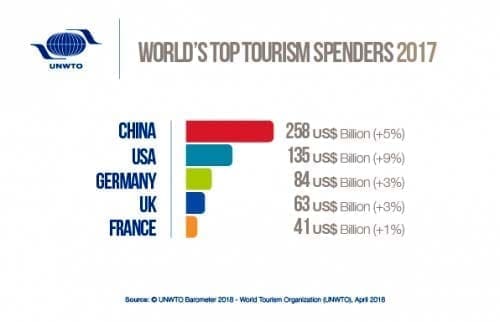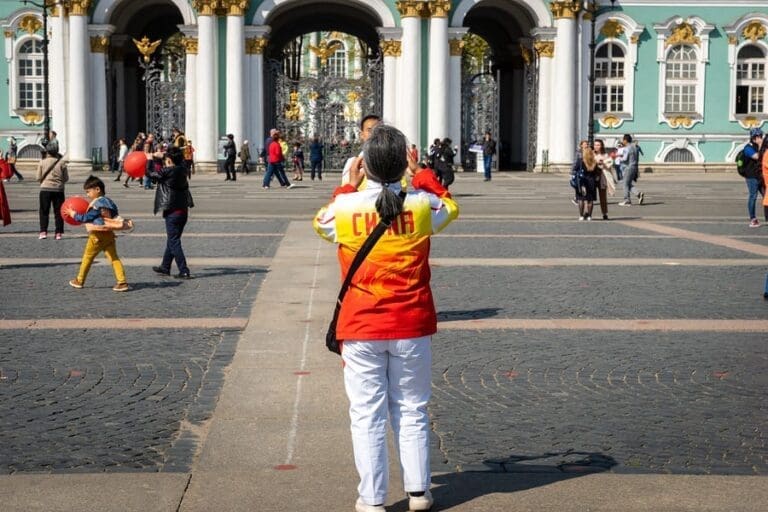
Six easy steps to build and grow your brand in China
Since 2012, when China first claimed top spot as the largest single source tourist market for Asia-Pacific countries, the number of Chinese tourists has been increasing.
When we consider just 8.7 per cent (or 120 millions of China’s population) are registered with passports (as opposed to 36 per cent in the USA), Chinese tourist arrivals globally are expected to double in the next few years.
It was not surprising that by 2017, overseas travels of Chinese tourists had ballooned to over 145 million trips. They are also the world’s biggest spenders, which UNWTO accounts for over US$258 billion in tourist receipts.

For businesses in the global travel, hotel and hospitality industry, one will surely gaze in awe and excitement at these big numbers.
What steps should global hoteliers, hospitality, lifestyle and retail establishments take in order to bite into a slice of China’s millions of outbound travellers?
Step one – be ‘linguistically visible’
For Chinese travellers, their ‘customer experience’ starts from comfortably browsing and reading your website in their preferred language – simplified Chinese. But do not ever expect machine translation systems to help you bridge that language divide.
Because marketing-related content is written by creative copywriters. Typically, such content is interspersed with satire, slang and colloquial expressions – to be engaging and enticing to their target readers. Translation machines are not built to decipher emotional expressions, or to analyse if sentences are funny or serious.
It does not identify missing words in the original source text, or to suggest a better choice of words or phrases with the same meaning.
In view of these anomalies, the end-product of machine translated pieces is likely to be filled with unnatural sentence structures or nonsensical phrases which will be awfully embarrassing to the brand.
Only human bilingual editors can detect if there are errors or inconsistencies in the source text, and to equally mimic the emotional aspects of the source copywriter’s intended pun.
Transcreation(translations with a creative spin), aka creative translation, is what you need.
This is certain that your source content is effectively localised into the Chinese language or any other language versions.
Having good localised content is so imperative, especially in trying to woo your target audiences for a call-to-action, to visit your website, etc.
With good creative translation, your target audiences will be able to build that emotional connection with your brand, in every language.
Step two – understand China is a mobile-first nation
Nowhere in the world consumers are caught up with their smartphones and mobile apps than in China. The Chinese use their smartphones to perform practically every consumer’s chores – from everyday purchases, surfing local and global websites for news, communicating and socialising in group chats, etc.
 For example, Chinese travellers would search on news about overseas destinations, check on hotel websites, weather, etc., on Chinese social media sites and travel forums via their mobile devices.
For example, Chinese travellers would search on news about overseas destinations, check on hotel websites, weather, etc., on Chinese social media sites and travel forums via their mobile devices.
Most would prefer to make online purchases, such as accommodations, air tickets, train rides, local tours, which are booked before their trip.
Other items, such as ‘event entry tickets’, ‘car rentals’, ‘restaurant reservations’, will likely be purchased during their trip. These are done through the mobile apps that are installed on their smartphones.
Step three – understand China’s blockade on foreign websites and online apps
Majority of the Western-based Internet and online apps, such as Google, PayPal, Facebook, YouTube, Twitter, Instagram, Pinterest are censored by the ‘Great Firewall’ of China.
In place, there are over six million apps uniquely-developed in China, while over 200 Chinese-based apps are commonly used by consumers on a daily basis.
 This chart was created using various logos of the more popular apps uniquely used only in China.
This chart was created using various logos of the more popular apps uniquely used only in China.
The Chinese use these apps to browse the internet, perform online payments, message, stream videos, chat on social media, etc.
In short, they do not have any need to use those Western-based apps commonly used outside China.
For global hoteliers, hospitality, travel, lifestyle and retail establishments targeting Chinese consumers, the correct strategy is to run your online banners, video ads, notifications, push-ads mechanicals, etc. on China-based media apps and websites. It means that various online marketing campaigns running on Western-based apps will not work, resulting in a futile investment.
This will have much more tangible results in gaining access into the large Chinese outbound travellers’ market.
Step four – understand Chinese ‘FITs’
FIT refers to ‘Free, Independent Traveller’. The trend amongst Chinese tourists is to move away from the stereotyped ‘flag waving’ tour packages to more authentic travel and holiday experiences. These FITs prefer self-planned DIY holidays that are not bound by rigid schedules.
They are mostly from middle to higher income households, with an average annual combined income of US$35,000. It’s estimated that 30 million households have already crossed this threshold.
For websites of hotel and resorts intending to woo the Chinese travellers, providing content about the destination’s key attractions such as “unique places to visit”, “what to do”, “day or night city tours” is the information that is more likely to attract these Chinese FITs.
Step five – understand Chinese preference on customised travels
China’s growth in affluence has created large numbers of higher income earners who enjoy the refined taste of ‘customised travels’. They prefer self-coordinated or individualised tours, as well as unique and meaningful holiday experiences.
In a joint report by China Tourist Academy and Ctrip, bookings for their customised travels for the first half of 2018 saw a 300 per cent YOY increase.
Chinese customised travellers want to immerse in the local culture, unique architectures, as well as visit museums and historical sites that well-known in a destination.
Thus, to attract these customised travellers, it is necessary for hoteliers, hospitality, lifestyle and retail establishments to include features in their website content such as places of interest, cultural attractions, right down to unique dining experience, entertaining and fun events.
It is also important to consider getaway packages that coincide with the Chinese preferred travel calendar. These are during China’s ‘Golden Week’ national holidays.
For travel businesses in Europe and USA, the Golden Week holidays are the Chinese high-season periods, which are most ideal as they coincide with the low-season holidays experienced in Europe and USA.
Promotional campaigns should be launched three or two months before each of their high-season periods.
Step six – provide online transaction with Chinese payment gateways
From surveys conducted among Chinese travellers, 65 per cent had paid their expenses via mobile payments, while 77 per cent had spent more because mobile payments were accepted.
It is prudent to include online payment gateways such as Union Pay, Alipay or Wechat Pay.
Union Pay is accepted in over 150 countries. While Alipay andWeChat Pay, the two most popular digital mobile wallets, have partnerships with overseas networks.
The Chinese use their mobile wallets for cash transactions, which are ideal for taxi rides, at eateries or convenient stores, which are oftentimes cumbersome due to the language barrier.
In summary
For global hotels, hospitality, lifestyle and retail establishments wanting to gain access to the burgeoning Chinese travel market, the key is to be ‘linguistically visible’. This is in having Chinese language content on your and a strategy to deploy promotional online campaigns across China’s mobile app platforms and websites.
To be linguistically visible also means providing Chinese versions of brochures and literature on places of interest at your venue, property, attractions, etc.
Considering that the same artwork can be used for online reading at your website, or as downloadable PDFs for sharing, as well as for printing of hardcopy versions.
Having your marketing and publicity content in Chinese is mostly a one-time investment.
While running your online marketing and advertising campaigns through a precision Push & Pull Programmatic Ad strategy on Chinese websites and social media platforms (as opposed to international-used platforms) are all prudent investments.
These initiatives will translate into greater and better exposures for your branding messages, and also for your ongoing marketing to the millions of would-be Chinese travellers.
These are the critical steps that can help you attract and win the hearts and minds of Chinese travellers.
A well-sustained strategy builds stronger brand presence in this ever-growing market.
Needless to say, the financial returns are manifold.
About IPPWORLD
As a Language Service Provider, IPPWORLD has been assisting clients from the hospitality, travel and lifestyle industry for over two decades. We provide end-to-end content transcreation and multilingual project management solutions. Our one-stop support includes assisting clients in deploying online ad mechanicals, such as push-ads encapsulated in banners, videos, news-feeds, blogs, etc., customised especially for China’s internet environment and Chinese online media platforms. For more information, visit connect with global audiences through transcreation. Feel free to drop us a mail at info.singapore@ippworld.com, or simply connect with Joanne Chan on Linkedin.
































